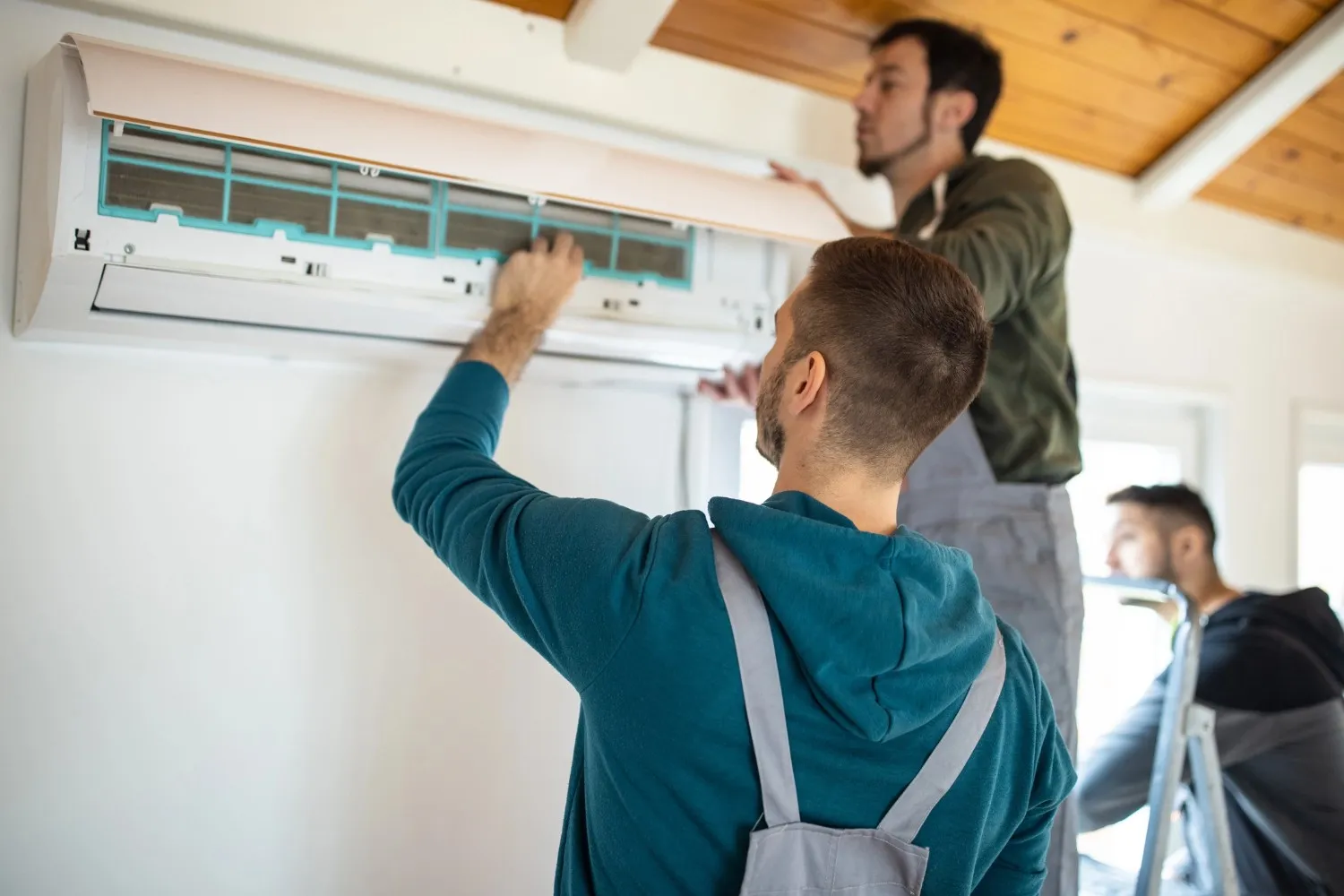Mini Split Replacement in Bethel Park, PA
Mini Split Replacement in Bethel Park, PA. Upgrade to a high-efficiency ductless system, save energy and costs. Learn more today.

Why Replace Your Mini Split?
- Lifespan Limitations: Most ductless mini splits last 10–15 years. Beyond this point, components wear out, refrigerant leaks become common, and repair bills mount.
- Efficiency Degradation: Compressor wear and outdated refrigerants can drop a system’s SEER rating by 20–30%, translating into noticeably higher electric bills.
- Enhanced Comfort Needs: Home additions, finished basements, sunroom conversions, or growing families can demand greater capacity or zoning flexibility than your current unit provides.
- Environmental Impact: Newer models use eco-friendly refrigerants and inverter-driven compressors that adjust speed to real-time load requirements, reducing greenhouse gas emissions.

Signs You Need a Replacement
- Rising Energy Bills: Unexplained jumps in monthly costs despite similar usage.
- Inconsistent Temperatures: Hot or cold spots in rooms served by the mini split.
- Frequent Refrigerant Leaks: Visible ice buildup, hissing sounds or oily residue around indoor or outdoor units.
- Repetitive Breakdowns: Technicians returning multiple times each season for the same issue.
- Excessive Noise or Vibration: Signs of failing motors or worn mounting hardware.
Our Five-Step Replacement Process
On-Site Assessment & Customized Estimate
- Licensed technicians evaluate system age, ductless head locations, electrical wiring and refrigerant lines.
- We review your comfort preferences, zone requirements and budget to recommend the right capacity and efficiency level.
Safe Unit Removal & Eco-Friendly Disposal
- Recovery of remaining refrigerant in compliance with EPA Section 608.
- Disassembly and removal of indoor heads, line sets and outdoor condenser.
- Recycling or proper disposal of all components to minimize environmental impact.
Wall and Conduit Preparation
- Patching and refinishing indoor wall penetrations for a clean, factory-finish look.
- Installation of modern PVC or metal conduit to protect refrigerant tubing, drain lines and wiring.
New System Installation & Precision Refrigerant Charging
- Placement of condenser on vibration-isolating pads or brackets.
- Mounting of indoor heads in optimal positions for airflow and aesthetics.
- Vacuum evacuation and charge of refrigerant to manufacturer-specified levels.
Startup, Performance Testing & Cleanup
- Verification of correct electrical connections, voltage and amperage.
- Testing of heating and cooling modes, noise levels and thermostat calibration.
- Detailed homeowner walkthrough covering control operation, filter access and maintenance tips.
System Options & Upgrade Paths
Single-Zone vs Multi-Zone
- Single-Zone: Ideal for targeted areas such as master bedrooms, home offices or small additions. Lower upfront costs and simplified controls.
- Multi-Zone: One outdoor condenser serving two to eight indoor heads—perfect for whole-house comfort with individual room control.
Inverter-Driven Heat Pumps
- Variable-Speed Compressor: Adjusts output to match precise load requirements, eliminating on/off cycling.
- Quiet Operation: Sound levels as low as 19 dB(A) on select indoor models.
- Better Dehumidification: Longer run times extract more moisture from humid summer air.
Brand Comparisons
- Mitsubishi Electric: Industry leader in reliability, efficiency and quiet performance.
- Carrier: Robust heat-pump models featuring Greenspeed Intelligence.
- Trane: Durable construction with advanced diagnostic features.
- MrCool DIY & Pro Series: Budget-friendly options with proven performance.
Smart Controls & Zoning
- Wi-Fi Enabled Thermostats: Adjust temperatures remotely via smartphone apps.
- Motion Sensors: Automatic setback in unoccupied zones.
- Integration with Home Automation: Voice control compatibility with Alexa or Google Assistant.
Cost Factors & Financing Equipment Costs
- SEER Ratings: Higher SEER units carry premium pricing but deliver greater annual energy savings.
- Number of Zones: Multi-zone condensers and additional indoor heads increase material and labor costs.
- Access Complexity: Attic or second-story installations may require lifts or scaffolding.
Labor & Permitting
- Licensed, insured technicians familiar with Bethel Park codes.
- Permit procurement and inspection coordination included in project scope.
- Investment Ranges (Ballpark Estimates)
- Single-Zone Replacement: $2,000–$3,500
- Two-Zone System: $4,500–$7,000
- Three-Zone and Larger: $7,500–$12,000+
Rebates & Tax Credits
- Pennsylvania’s Energy-Efficient Home Improvement Credit: Up to $1,200 annually.
- Local Utility Rebates: Act 129 incentives for qualifying high-efficiency systems.
- Manufacturer Promotions: Seasonal rebates on select brands.
- Flexible Financing: Low-interest plans designed to fit household budgets.


Schedule Service Today!
Contact us to schedule or request an estimate on installation and replacements!

+

We are here to help. A person on our team will text you back! 🙌
Thank you! Your submission has been received!
Oops! Something went wrong while submitting the form.





















.avif)


